This Article has been revised, edited and added to, by Poulomi Chakraborty.
- Understanding Your Audience: The Foundation of Effective Email Marketing
- Crafting Compelling Email Content
- Timing and Frequency: Getting It Right
- Personalization and Segmentation: Tailoring Your Message
- Building a Comprehensive Email Campaign
- Analyzing and Optimizing Email Campaigns
- Leveraging Automation for Efficiency and Effectiveness
- Conclusion
Email marketing is a powerful tool for businesses, especially for those operating on a subscription-based model. In a world where consumer attention is fragmented across various platforms, email remains a direct line to your customers. It’s a channel that allows you to build relationships, drive engagement, and increase retention. For subscription-based services, where maintaining a steady stream of recurring revenue is crucial, effective email marketing can make all the difference.
Subscription businesses rely heavily on customer retention and lifetime value. Unlike one-time purchases, the success of these businesses hinges on their ability to keep customers engaged and subscribed over the long term. This makes email marketing not just beneficial, but essential. It provides an opportunity to continuously engage with subscribers, nurture their loyalty, and reduce churn.
In this article, we’ll explore the various strategies and tactics you can use to maximize the effectiveness of your email marketing for subscription-based services. We’ll delve into how to craft compelling emails that keep your subscribers coming back, how to segment your audience for personalized communication, and how to measure and optimize your campaigns for the best results.
Understanding Your Audience: The Foundation of Effective Email Marketing
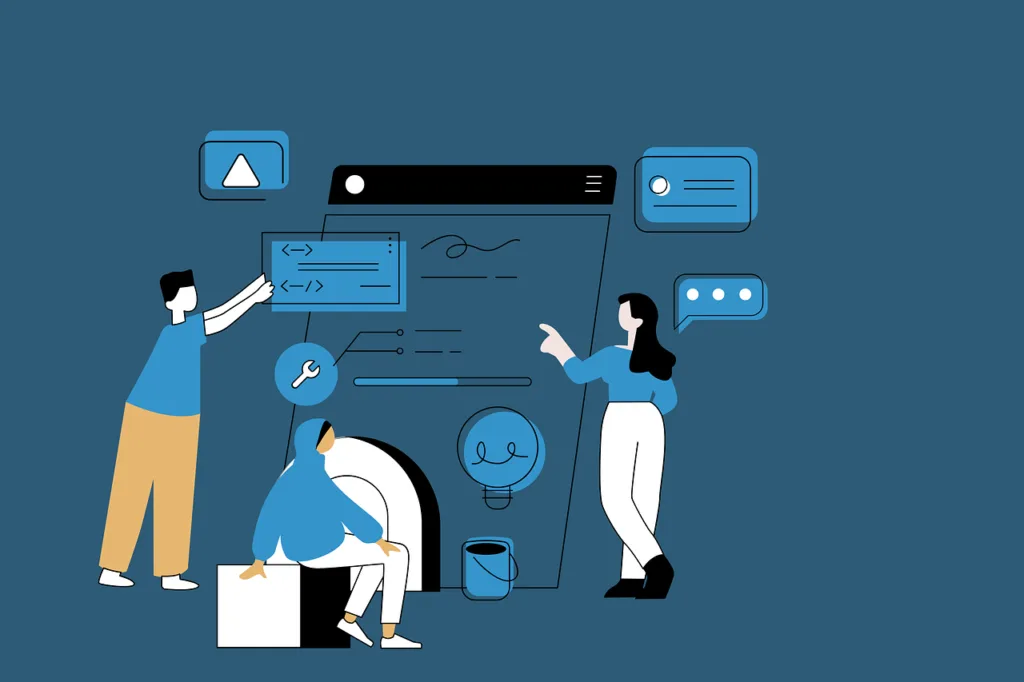
The first step in any successful email marketing strategy is understanding your audience. For subscription-based services, this means knowing who your subscribers are, what they value, and how they interact with your service. This foundational knowledge will inform every aspect of your email marketing strategy, from the content you create to the timing of your emails.
Demographics and Psychographics
Start by gathering demographic data about your subscribers. This includes basic information like age, gender, location, and occupation. While demographics provide a broad understanding of your audience, psychographics delve deeper into their behaviors, interests, and values. Knowing what motivates your subscribers and what challenges they face allows you to craft more relevant and engaging emails.
Customer Behavior and Preferences
Analyzing customer behavior is crucial for understanding how subscribers interact with your service. Look at metrics such as how often they use your service, which features they use most, and any patterns in their usage. This data can help you identify different segments within your audience, allowing for more targeted and personalized email campaigns.
Feedback and Surveys
Direct feedback from your subscribers is invaluable. Conduct surveys and ask for feedback regularly to understand their needs and preferences better. This direct line of communication can reveal insights that data alone cannot provide, such as why they value your service or what might lead them to unsubscribe.
Segmenting Your Audience
Effective email marketing hinges on segmentation. By dividing your audience into distinct groups based on their demographics, behaviors, and preferences, you can tailor your messages to be more relevant and engaging.
Segmentation allows you to send the right message to the right person at the right time, increasing the likelihood of engagement and retention.
For example, new subscribers might receive a series of onboarding emails to help them get started, while long-term subscribers might receive emails with advanced tips and exclusive offers. By addressing the specific needs and interests of each segment, you can build stronger relationships and drive more value from your email marketing efforts.
Crafting Compelling Email Content
With a clear understanding of your audience, the next step is to craft compelling email content. The content of your emails should be engaging, relevant, and aligned with your subscribers’ needs and interests. Here’s how to do it effectively.
Writing Engaging Subject Lines
The subject line is the first thing your subscribers see, and it often determines whether they open your email or not. A compelling subject line is clear, concise, and enticing. It should give a hint of what’s inside without giving everything away, creating curiosity. For example, a subject line like “Unlock Exclusive Tips to Maximize Your Subscription” piques interest and encourages the recipient to open the email.
Personalized Content
Personalization goes beyond using the subscriber’s name in the greeting. It involves tailoring the content of the email to the subscriber’s preferences and behavior. For instance, if a subscriber frequently uses a particular feature of your service, you can send them emails with tips on how to get even more value from that feature. Personalization makes your emails more relevant and increases engagement.
Value-Driven Messages
Every email you send should offer value to your subscribers. Whether it’s a useful tip, an exclusive offer, or important information about their subscription, your emails should provide something beneficial. This value-driven approach ensures that your subscribers look forward to your emails and remain engaged with your service.
Clear and Compelling Calls to Action
A clear and compelling call to action (CTA) is essential for driving engagement. Your CTA should be specific, action-oriented, and aligned with the goal of the email. For example, if the email is about a new feature, the CTA could be “Try It Now” or “Learn More.” A well-crafted CTA guides the subscriber towards the desired action and makes it easy for them to engage.
Visual Appeal
Visuals can enhance the appeal of your emails and make the content more engaging. Use high-quality images, graphics, and a clean layout to create visually appealing emails. However, ensure that the visuals complement the content and don’t overwhelm it. The design should be mobile-friendly, as a significant portion of emails are opened on mobile devices.
Consistency and Branding
Maintaining consistency in your email design and tone of voice reinforces your brand identity. Use consistent colors, fonts, and imagery that align with your brand. Consistent branding makes your emails instantly recognizable and builds trust with your subscribers.
Timing and Frequency: Getting It Right
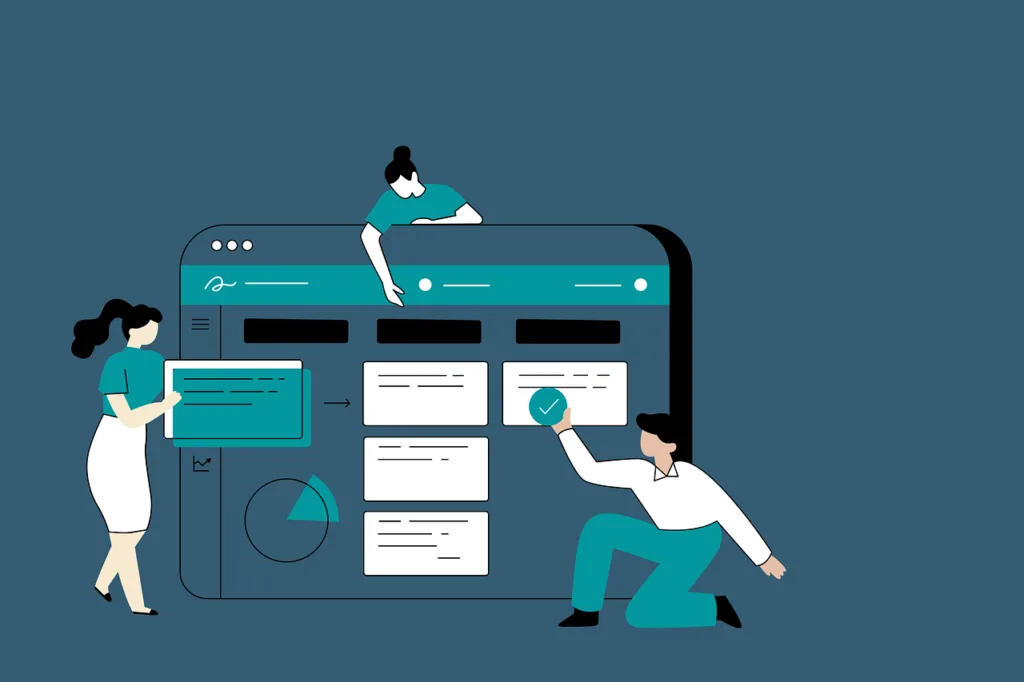
Once you have crafted compelling content, the next crucial aspect is the timing and frequency of your emails. For subscription-based services, timing and frequency can significantly impact engagement and retention. Getting it right involves understanding your audience’s habits and preferences and adjusting your email schedule accordingly.
Understanding Timing
The timing of your emails can affect open rates and engagement. Sending emails when your subscribers are most likely to check their inboxes can increase the chances of your emails being opened and read.
Time of Day
The best time to send emails often depends on your audience’s daily routines. For example, sending emails early in the morning can catch subscribers as they start their day, while sending emails in the evening can reach them when they have more leisure time to engage. Testing different times of day and analyzing open rates can help you determine the optimal sending time for your audience.
Day of the Week
The day of the week can also influence email engagement. For many businesses, weekdays might perform better than weekends, as people are more likely to check their emails during workdays. However, this can vary depending on your audience.
For instance, if your subscription service targets busy professionals, sending emails on weekdays might be more effective. Conversely, if your service is more lifestyle-oriented, weekends might yield better results. Testing and analyzing performance on different days can provide valuable insights.
Finding the Right Frequency
Email frequency is a delicate balance. Too many emails can overwhelm and annoy your subscribers, leading to higher unsubscribe rates. Too few emails, on the other hand, can result in decreased engagement and missed opportunities to nurture your subscribers.
Regular Communication
Establishing a regular email schedule helps set expectations with your subscribers. Whether it’s a weekly newsletter, a monthly update, or special announcements, consistent communication keeps your audience engaged without overwhelming them. Regular emails also help maintain a connection with your subscribers, reminding them of the value your service provides.
Segmentation-Based Frequency
Different segments of your audience might have different preferences for email frequency. For example, new subscribers might appreciate more frequent emails during their onboarding phase, while long-term subscribers might prefer less frequent, more substantial updates. By tailoring the frequency to different segments, you can provide a more personalized experience and keep engagement levels high.
Automation for Efficiency
Email automation can streamline your communication and ensure timely delivery of relevant content. Automation tools allow you to set up email sequences that are triggered by specific actions or time intervals. For subscription-based services, automated emails can include welcome sequences, renewal reminders, and re-engagement campaigns.
Welcome Series
A welcome series is a sequence of emails sent to new subscribers to introduce them to your service. This series can include a welcome message, a tutorial or guide on how to use the service, and tips for getting the most value. A well-crafted welcome series sets the tone for the subscriber relationship and can significantly enhance retention.
Renewal Reminders
Automated renewal reminders are crucial for subscription-based services. These emails remind subscribers when their subscription is about to renew, providing a prompt to continue with the service. Including information on any changes or new features can add value and encourage renewal.
Re-engagement Campaigns
Re-engagement campaigns target subscribers who have become inactive or less engaged. Automated re-engagement emails can include special offers, personalized messages, or surveys to understand their reasons for disengagement. The goal is to reignite their interest and bring them back to active use of the service.
Measuring and Optimizing
Regularly measuring the performance of your email campaigns is essential for optimizing timing and frequency. Key metrics to track include open rates, click-through rates, conversion rates, and unsubscribe rates. Analyzing these metrics can provide insights into what’s working and what needs adjustment.
A/B Testing
A/B testing can be particularly useful for determining the best timing and frequency. By testing different send times, days, and email frequencies, you can gather data on what yields the best results. Continuously testing and refining your approach ensures that your email strategy evolves with your audience’s preferences.
Feedback Loop
Encouraging feedback from your subscribers can also provide valuable insights into timing and frequency preferences. Including surveys or feedback forms in your emails allows subscribers to share their preferences, which can guide your strategy.
Optimizing the timing and frequency of your emails ensures that your messages reach your audience at the right moments, enhancing engagement and retention. With a strategic approach to timing and frequency, you can make your email marketing efforts more effective and aligned with your subscribers’ needs.
Personalization and Segmentation: Tailoring Your Message
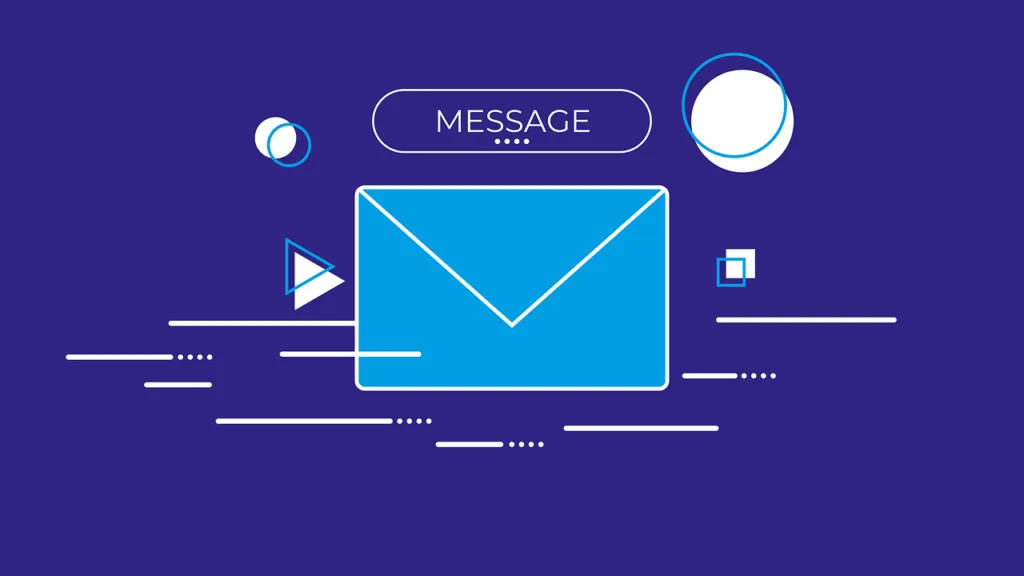
Personalization and segmentation are critical components of successful email marketing for subscription-based services. By tailoring your messages to individual preferences and behaviors, you can create more engaging and relevant emails that resonate with your subscribers. This section explores how to effectively implement personalization and segmentation in your email campaigns.
The Power of Personalization
Personalization goes beyond addressing your subscribers by their first name. It involves customizing the content of your emails to match the specific interests, behaviors, and preferences of each subscriber. Personalized emails create a more meaningful connection with your audience and can significantly improve engagement and retention.
Using Data for Personalization
The first step in personalization is gathering and analyzing data about your subscribers. This includes demographic data, behavioral data, and interaction history. By leveraging this data, you can create highly targeted and relevant email content.
For example, if a subscriber frequently uses a specific feature of your service, you can send them tips on maximizing that feature. If they have shown interest in a particular topic, you can send them content related to that interest. Personalization based on data ensures that your emails are relevant and valuable to each subscriber.
Dynamic Content
Dynamic content allows you to customize different parts of your email for different segments of your audience. For instance, you can create one email template with different content blocks that are shown to different subscribers based on their preferences. This approach ensures that each subscriber receives content that is specifically tailored to their interests.
Dynamic content can include personalized product recommendations, custom offers, and personalized greetings. By incorporating dynamic content, you can make your emails more engaging and relevant, which can lead to higher open rates and click-through rates.
Effective Segmentation Strategies
Segmentation involves dividing your email list into distinct groups based on specific criteria. By segmenting your audience, you can send more targeted and relevant emails that address the unique needs and interests of each group.
Demographic Segmentation
Demographic segmentation divides your audience based on demographic factors such as age, gender, location, and occupation. This type of segmentation helps you tailor your messages to different demographic groups. For example, you might send different emails to subscribers in different geographic regions, highlighting local events or offers.
Behavioral Segmentation
Behavioral segmentation focuses on how subscribers interact with your service. This includes their usage patterns, purchase history, and engagement with previous emails. Behavioral segmentation allows you to create more targeted campaigns based on subscriber actions.
For example, you can create segments for active users, occasional users, and inactive users. Active users might receive advanced tips and exclusive offers, while inactive users might receive re-engagement emails with special incentives to return.
Psychographic Segmentation
Psychographic segmentation divides your audience based on their interests, values, and lifestyles. This type of segmentation helps you create more personalized and relevant content. For instance, if your service includes various features that appeal to different interests, you can segment your audience based on those interests and tailor your emails accordingly.
Lifecycle Segmentation
Lifecycle segmentation considers the different stages of the subscriber journey. This includes new subscribers, active subscribers, and those at risk of churning. Each stage requires a different approach to communication.
For new subscribers, you can send onboarding emails to help them get started with your service. For active subscribers, you can send tips and updates to keep them engaged. For subscribers at risk of churning, you can send re-engagement emails with special offers or personalized messages to win them back.
Implementing Personalization and Segmentation
Implementing personalization and segmentation requires the right tools and strategies. Here’s how to do it effectively:
Email Marketing Platforms
Use email marketing platforms that offer advanced personalization and segmentation capabilities. These platforms allow you to create dynamic content, automate personalized email sequences, and segment your audience based on various criteria.
Data Integration
Integrate your email marketing platform with your CRM and other data sources to ensure you have access to comprehensive subscriber data. This integration allows you to leverage data from multiple sources for more accurate and effective personalization and segmentation.
Automation
Automation is key to implementing personalization and segmentation at scale. Set up automated email sequences that are triggered by specific actions or events, such as sign-ups, renewals, or inactivity. Automation ensures that each subscriber receives timely and relevant emails without manual intervention.
Continuous Optimization
Personalization and segmentation should be continuously optimized based on performance data and feedback. Regularly analyze the results of your email campaigns to identify what’s working and what can be improved. Adjust your segmentation criteria and personalization tactics based on these insights to achieve better results.
Personalization and segmentation are powerful strategies for making your email marketing more effective and engaging. By tailoring your messages to the unique needs and preferences of your subscribers, you can build stronger relationships, enhance retention, and drive more value from your email campaigns.
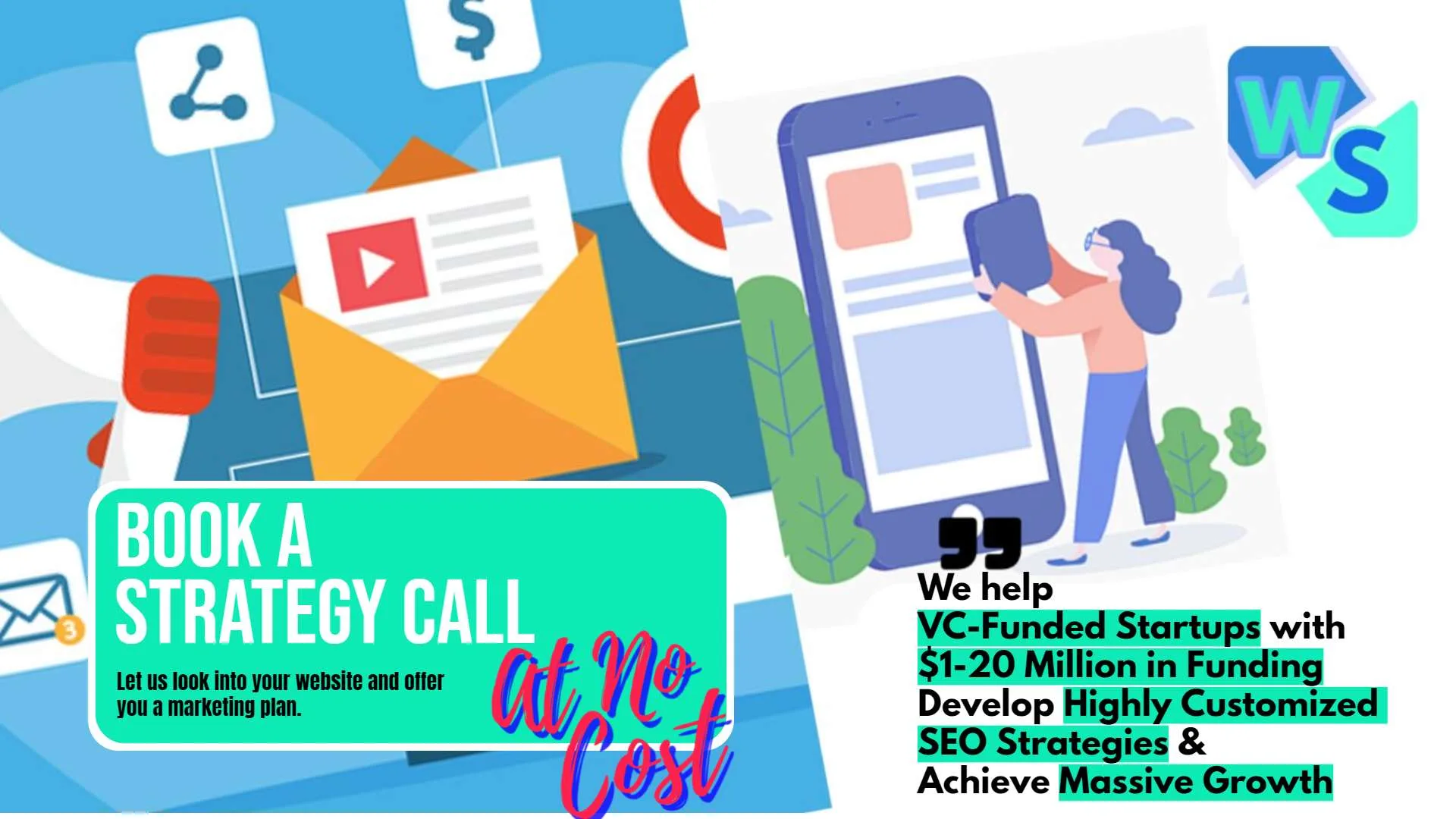
Building a Comprehensive Email Campaign
Creating a comprehensive email campaign for subscription-based services involves more than just sending regular updates. It requires a strategic approach to plan, execute, and optimize every email you send. This section will guide you through the process of building a robust email campaign that drives engagement, reduces churn, and enhances the overall customer experience.
Setting Clear Goals
The first step in building an effective email campaign is to set clear, measurable goals. These goals will guide your strategy and help you evaluate the success of your campaigns. Common goals for subscription-based services include:
- Increasing subscriber engagement
- Reducing churn rates
- Driving renewals and upgrades
- Promoting new features or services
- Gathering feedback and insights
Having clear goals allows you to tailor your email content and strategy to achieve specific outcomes. For example, if your goal is to reduce churn, you might focus on sending re-engagement emails to inactive subscribers.
Designing the Email Journey
A well-designed email journey guides subscribers through various stages of their relationship with your service. This journey typically includes several key stages: onboarding, engagement, and retention.
Onboarding
The onboarding stage is crucial for setting the tone of your subscriber relationship. It’s your opportunity to make a strong first impression and help new subscribers get started with your service. Onboarding emails should be informative, welcoming, and helpful.
- Welcome Email: Start with a friendly welcome email that thanks the subscriber for joining and introduces them to your service.
- Getting Started Guide: Provide a step-by-step guide on how to use your service, highlighting key features and benefits.
- Tips and Tricks: Share useful tips and best practices to help new subscribers get the most out of your service.
Engagement
Once subscribers are onboarded, the focus shifts to keeping them engaged. Engagement emails should provide ongoing value and encourage regular use of your service.
- Regular Updates: Send updates about new features, improvements, or upcoming events. These emails keep subscribers informed and excited about what’s new.
- Educational Content: Share tutorials, webinars, or blog posts that help subscribers deepen their understanding and use of your service.
- Personalized Recommendations: Based on subscriber behavior, send personalized recommendations for features or content that might interest them.
Retention
The retention stage aims to maintain subscriber satisfaction and loyalty, reducing the risk of churn. Retention emails should reinforce the value of your service and address any potential pain points.
- Renewal Reminders: Send reminders as the renewal date approaches, highlighting the benefits of continuing the subscription.
- Exclusive Offers: Provide special discounts or offers to long-term subscribers as a token of appreciation.
- Feedback Requests: Ask for feedback to identify areas for improvement and show subscribers that you value their opinions.
Crafting Engaging Content
The content of your emails plays a significant role in their effectiveness. Engaging content should be relevant, valuable, and aligned with your subscribers’ needs and interests.
Storytelling
Storytelling is a powerful way to connect with your audience on an emotional level. Share stories about how other subscribers have benefited from your service, or highlight success stories from your team. Personal stories create a sense of community and make your emails more relatable.
Visuals and Design
Visual appeal enhances the readability and engagement of your emails. Use high-quality images, infographics, and a clean, professional layout. Ensure that your emails are mobile-friendly, as a significant portion of your audience will read them on mobile devices.
Clear Call to Action
Each email should have a clear and compelling call to action (CTA). Whether it’s “Start Your Free Trial,” “Learn More,” or “Give Us Feedback,” your CTA should guide subscribers towards the desired action. Make sure the CTA is prominent and easy to find.
Automating Your Campaigns
Automation is key to managing your email campaigns efficiently and effectively. Automated campaigns ensure that your emails are sent at the right time, to the right people, with the right content.
Drip Campaigns
Drip campaigns are a series of automated emails sent based on specific triggers or time intervals. For example, a new subscriber might receive a welcome series, followed by a getting-started guide, and then regular updates. Drip campaigns help nurture subscribers through different stages of their journey.
Behavior-Triggered Emails
Behavior-triggered emails are sent based on specific actions taken by subscribers. For instance, if a subscriber abandons their cart or doesn’t log in for a while, you can send a targeted email to re-engage them. These emails are highly personalized and can significantly improve engagement.
Analytics and Optimization
Regularly monitoring the performance of your email campaigns is essential for continuous improvement. Track key metrics such as open rates, click-through rates, conversion rates, and unsubscribe rates. Use this data to identify what’s working and what needs adjustment.
A/B testing different elements of your emails, such as subject lines, content, and send times, can provide valuable insights into what resonates best with your audience. Continuously optimize your campaigns based on these insights to achieve better results.
Building a comprehensive email campaign for subscription-based services involves setting clear goals, designing an effective email journey, crafting engaging content, and leveraging automation for efficiency. By taking a strategic approach and continuously optimizing based on data, you can create email campaigns that drive engagement, reduce churn, and enhance the overall customer experience.
Analyzing and Optimizing Email Campaigns

Successful email marketing for subscription-based services requires constant analysis and optimization. Understanding how your campaigns are performing and making data-driven decisions to improve them is crucial for sustained success. This section explores the methods and tools you can use to analyze and optimize your email campaigns effectively.
Tracking Key Metrics
To evaluate the success of your email campaigns, you need to track key performance metrics. These metrics provide insights into how your emails are performing and where there might be room for improvement.
Open rates measure the percentage of recipients who open your email. This metric helps you understand how effective your subject lines are and whether your emails are being noticed. A low open rate might indicate that your subject lines need more work or that your emails are being sent at the wrong time.
Click-through rates (CTR) measure the percentage of recipients who click on links within your email. This metric indicates how engaging and relevant your email content is. A low CTR could suggest that your content isn’t resonating with your audience or that your call-to-action needs to be more compelling.
Conversion rates track the percentage of recipients who take a desired action, such as making a purchase or signing up for a webinar. This metric is crucial for understanding the overall effectiveness of your email campaigns in driving business goals.
Bounce rates measure the percentage of emails that were not delivered to the recipient’s inbox. High bounce rates can negatively impact your sender reputation and deliverability. Regularly cleaning your email list to remove invalid addresses can help reduce bounce rates.
Unsubscribe rates indicate the percentage of recipients who opt out of your email list after receiving an email. A high unsubscribe rate may signal that your emails are not meeting subscriber expectations. It’s important to analyze why subscribers are opting out and make necessary adjustments to your email strategy.
Using Analytics Tools
Email marketing platforms typically offer built-in analytics tools that provide detailed insights into your campaign performance. These tools can help you track key metrics, segment your audience, and conduct A/B tests.
Integrating your email marketing platform with your CRM and other data sources can provide a more comprehensive view of your subscribers’ behavior and preferences. This integration allows you to leverage data from multiple sources to create more targeted and effective email campaigns.
A/B Testing for Continuous Improvement
A/B testing is a powerful method for optimizing your email campaigns. By testing different variations of your emails, you can determine what resonates best with your audience and make data-driven decisions to improve your campaigns.
When conducting A/B tests, focus on one variable at a time to isolate its impact. For example, you might test different subject lines to see which one yields a higher open rate. Once you have sufficient data, analyze the results to determine which variation performed better and implement those insights into your future campaigns.
Testing different send times and frequencies can also provide valuable insights into when your audience is most likely to engage with your emails. Experimenting with different times of day and days of the week can help you identify the optimal sending schedule for your audience.
Gathering and Using Subscriber Feedback
Direct feedback from your subscribers can provide valuable insights into how your emails are perceived and where there might be room for improvement. Including surveys or feedback forms in your emails allows subscribers to share their opinions and preferences.
Analyzing this feedback can help you identify common pain points and areas for improvement. For example, if subscribers frequently mention that your emails are too frequent, you might consider adjusting your sending frequency. If they express interest in specific types of content, you can tailor your future emails to better meet their needs.
Iterative Optimization
Email marketing is an ongoing process that requires continuous optimization. Regularly reviewing your campaign performance and making data-driven adjustments ensures that your email strategy evolves with your audience’s preferences and needs.
Set up a regular schedule for analyzing your email metrics and conducting A/B tests. This iterative approach allows you to stay agile and responsive to changes in subscriber behavior. Over time, these incremental improvements can lead to significant gains in engagement, retention, and overall campaign effectiveness.
Staying Compliant with Email Regulations
It’s important to stay compliant with email regulations such as the CAN-SPAM Act and GDPR. These regulations set guidelines for how businesses can send marketing emails and protect subscriber privacy. Ensure that your emails include a clear and easy way for subscribers to opt out and that you have obtained proper consent before adding subscribers to your email list.
Maintaining compliance not only protects your business from legal issues but also helps build trust with your subscribers. Transparency and respect for subscriber preferences are key to building long-term relationships and achieving sustained success with your email marketing efforts.
Analyzing and optimizing your email campaigns involves tracking key metrics, leveraging analytics tools, conducting A/B tests, gathering subscriber feedback, and staying compliant with regulations. By continuously refining your strategy based on data and insights, you can create more effective and engaging email campaigns that drive better results for your subscription-based service.
Leveraging Automation for Efficiency and Effectiveness

Automation is a game-changer for email marketing, especially for subscription-based services. It allows you to streamline your communication, ensuring timely and relevant emails are sent without manual intervention. In this section, we will explore how to effectively leverage automation to enhance your email marketing efforts.
Setting Up Automated Workflows
Automated workflows are sequences of emails that are triggered by specific actions or events. These workflows ensure that your subscribers receive the right message at the right time, enhancing engagement and retention.
Onboarding workflows are crucial for welcoming new subscribers and guiding them through the initial stages of using your service. These workflows typically start with a welcome email, followed by a series of emails that provide tips, tutorials, and resources to help new subscribers get started.
This structured approach ensures that new subscribers have a positive first impression and quickly understand the value of your service.
Engagement workflows are designed to keep subscribers actively using your service. These can include regular updates about new features, personalized recommendations based on user behavior, and educational content to help subscribers get the most out of your service.
By maintaining regular communication, you can keep your subscribers engaged and reduce the risk of churn.
Renewal workflows are essential for subscription-based services. As the renewal date approaches, send reminders to subscribers, highlighting the benefits of continuing their subscription. Offering special incentives or discounts can also encourage renewals. These workflows help ensure that subscribers are aware of their renewal dates and are motivated to continue their subscription.
Behavior-Triggered Emails
Behavior-triggered emails are sent based on specific actions taken by your subscribers. These emails are highly personalized and relevant, as they are directly tied to the subscriber’s behavior.
For instance, if a subscriber abandons their cart, you can send a reminder email with a special offer to encourage them to complete the purchase. Similarly, if a subscriber hasn’t logged into your service for a while, a re-engagement email with personalized content or an exclusive offer can prompt them to return.
These targeted emails are effective because they address the subscriber’s immediate needs or interests, increasing the likelihood of engagement and conversion.
Personalization at Scale
Automation enables you to personalize emails at scale, ensuring each subscriber receives content tailored to their preferences and behavior. Use dynamic content to customize different parts of your email based on subscriber data.
For example, if you have a diverse subscriber base with different interests, you can create a single email template with dynamic content blocks. These blocks can display different messages, offers, or recommendations based on the subscriber’s past interactions with your service.
Personalization at this level creates a more engaging and relevant experience for your subscribers, fostering stronger relationships and higher retention rates.
Utilizing Drip Campaigns
Drip campaigns are automated sequences of emails sent over a specified period. These campaigns are designed to nurture subscribers through different stages of their journey, from initial sign-up to long-term engagement.
For new subscribers, a drip campaign might include a series of welcome emails, getting-started guides, and tips for maximizing the value of the service. For existing subscribers, drip campaigns can provide ongoing education, updates about new features, and special offers.
By delivering consistent, valuable content over time, drip campaigns keep your subscribers engaged and invested in your service.
Measuring and Optimizing Automated Campaigns
Regularly measuring the performance of your automated campaigns is essential for optimization. Track key metrics such as open rates, click-through rates, and conversion rates for each email in your automated workflows.
Analyze this data to identify which emails are performing well and which ones need improvement. For example, if you notice that the open rates for your re-engagement emails are low, you might need to test different subject lines or send times.
Continuous optimization ensures that your automated campaigns remain effective and aligned with your subscribers’ needs and preferences.
Staying Compliant with Automation
Automation must be used responsibly to stay compliant with email regulations such as the CAN-SPAM Act and GDPR. Ensure that your automated emails include a clear way for subscribers to opt out and that you have obtained proper consent before sending emails.
Regularly review your automated workflows to ensure they comply with regulatory requirements and respect subscriber preferences. Transparency and respect for privacy are crucial for maintaining trust and building long-term relationships with your subscribers.
Leveraging automation allows you to deliver timely, personalized, and relevant emails to your subscribers, enhancing engagement and retention. By setting up automated workflows, using behavior-triggered emails, personalizing content at scale, and continuously optimizing your campaigns, you can make your email marketing more efficient and effective.
Conclusion
Email marketing for subscription-based services is a vital strategy for driving engagement, retention, and long-term customer loyalty. By understanding your audience, crafting personalized and relevant content, and leveraging automation, you can create compelling email campaigns that resonate with your subscribers. Regularly analyzing performance and optimizing your approach ensures that your efforts remain effective and aligned with your goals.
The key to success lies in balancing strategic planning with continuous refinement, always keeping the subscriber experience at the forefront. With a thoughtful and data-driven approach, email marketing can become a powerful tool for sustaining and growing your subscription-based business, fostering deeper connections and delivering consistent value to your subscribers.
Read next
- How to Dominate Google Rankings for Every Type of Loan Service
- Interactive Content Can Skyrocket Your Lead Capture. We Show How!
- How to Utilize Dynamic Content in Email Campaigns
- What is a SMART Plan? And, Why You Need One
- How AI LLMs will Revolutionize SEO (in 2023): Our Insights!





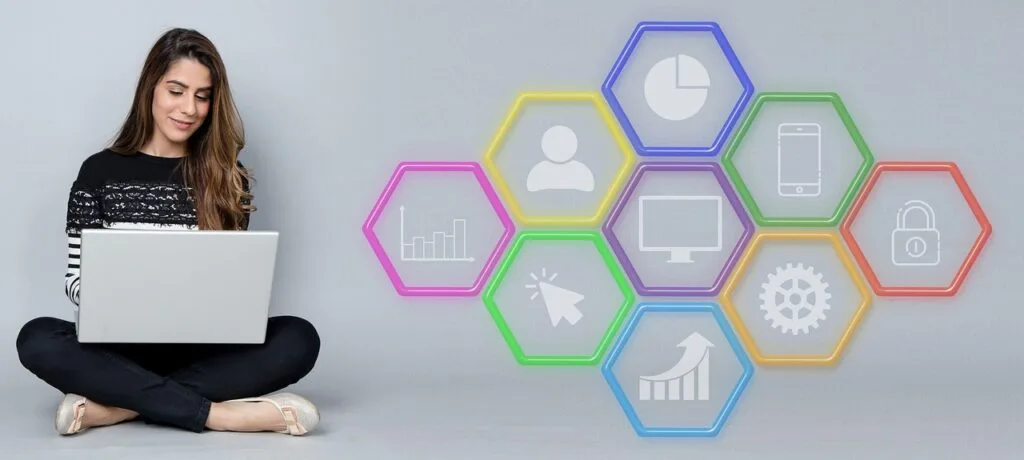
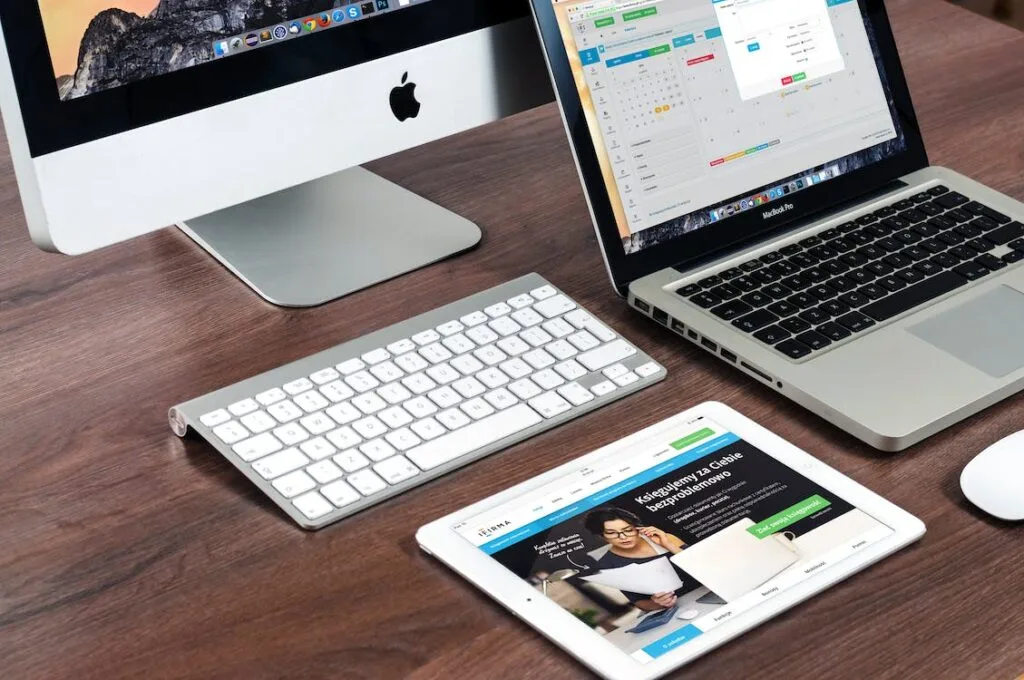





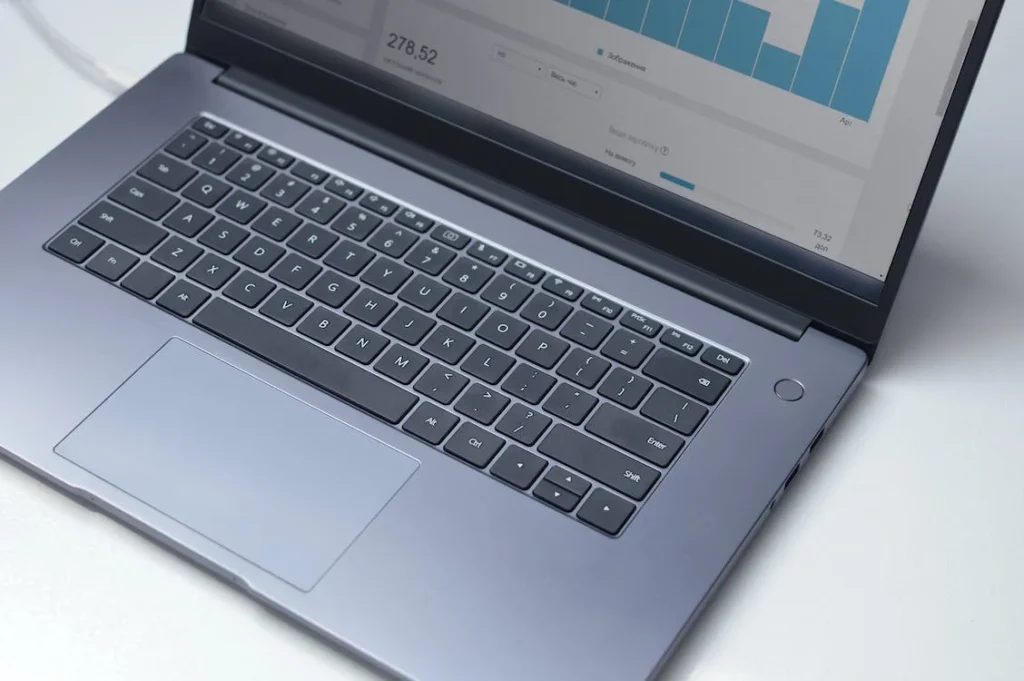









Comments are closed.